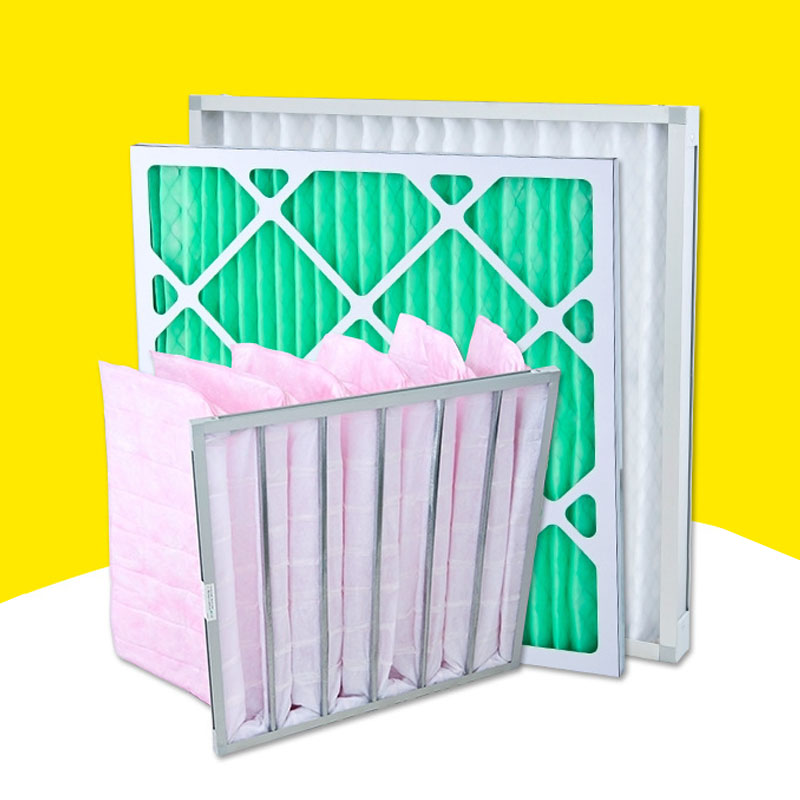 English
English Español
Español  Português
Português  русский
русский  Français
Français  日本語
日本語  Deutsch
Deutsch  tiếng Việt
tiếng Việt  Italiano
Italiano  Nederlands
Nederlands  ภาษาไทย
ภาษาไทย  Polski
Polski  한국어
한국어  Svenska
Svenska  magyar
magyar  Malay
Malay  বাংলা ভাষার
বাংলা ভাষার  Dansk
Dansk  Suomi
Suomi  हिन्दी
हिन्दी  Pilipino
Pilipino  Türkçe
Türkçe  Gaeilge
Gaeilge  العربية
العربية  Indonesia
Indonesia  Norsk
Norsk  تمل
تمل  český
český  ελληνικά
ελληνικά  український
український  Javanese
Javanese  فارسی
فارسی  தமிழ்
தமிழ்  తెలుగు
తెలుగు  नेपाली
नेपाली  Burmese
Burmese  български
български  ລາວ
ລາວ  Latine
Latine  Қазақша
Қазақша  Euskal
Euskal  Azərbaycan
Azərbaycan  Slovenský jazyk
Slovenský jazyk  Македонски
Македонски  Lietuvos
Lietuvos  Eesti Keel
Eesti Keel  Română
Română  Slovenski
Slovenski  मराठी
मराठी  Srpski језик
Srpski језик
What is the filtering principle of a medium efficiency filter?
2023-08-09
1. Interception
Medium effect filter, dust particles in the air move with the inertial motion or irregular Brownian motion of the air flow or under the action of a certain field force. When particles move into other objects, the Van der Waals force (the force between molecules, molecular clusters) between objects makes particles stick to the fiber surface. The dust entering the filter medium has more opportunities to collide with the medium, and if it collides with the medium, it will be stuck. Smaller dust particles collide with each other, forming larger particles that settle, and the particle concentration of dust in the air is relatively stable. The fading of indoor and wall colors is due to this reason. It is wrong to treat fiber filters like sieves.
2. Inertia and diffusion
The particle dust makes inertial motion in the air flow. When it encounters fibers arranged in disorder, the air flow changes direction, and the particle is stuck due to its inertial deviation from the direction and hitting the fiber. The larger the particle, the easier it is to collide, and the better the effect. Small particles of dust make irregular Brownian motion. The smaller the particles, the more intense the irregular movement, the more opportunities they have to hit obstacles, and the better the filtering effect. The particles smaller than 0.1 μ m in the air are mainly Brownian motion, so the particles are small and the filtering effect is good. Particles larger than 0.3 micrometers mainly engage in inertial motion, and the larger the particle, the higher the efficiency. Particles with unclear diffusion and inertia are the hardest to filter out. When measuring the performance of high-efficiency filters, people often specify the dust efficiency value that is the most difficult to measure.
3. Electrostatic effect
For some reason, fibers and particles may carry charges, resulting in electrostatic effects. The filtering effect of static filtering materials can be significantly improved. Reason: Static electricity causes dust to change its trajectory and collide with obstacles, making the dust adhere more firmly to the medium. Materials that can carry static electricity for a long time are also called "Electret" materials. After the material has static electricity, the resistance remains unchanged, and the filtering effect will be significantly improved. Static electricity does not play a decisive role in the filtration effect, only serves as an auxiliary role.
4. Chemical filtration
Chemical filters mainly selectively adsorb harmful gas molecules. There are a large number of invisible micropores and a large adsorption area in activated carbon materials. In activated carbon of the size of rice grains, the area inside the micropores is more than ten square meters. After free molecules come into contact with activated carbon, they condense into a liquid in the micropores, which stays in the micropores due to the capillary principle, some of which are integrated with the material. Adsorption without obvious chemical reactions is called physical adsorption. Some processes activated carbon, where the adsorbed particles react with the material to generate solid substances or harmless gases, known as Huaixue adsorption. The adsorption capacity of activated carbon materials continues to weaken during use, and when it weakens to a certain extent, the filter will be scrapped. If it is only physical adsorption, heating or steam fumigation can separate harmful gases from activated carbon and regenerate activated carbon.






